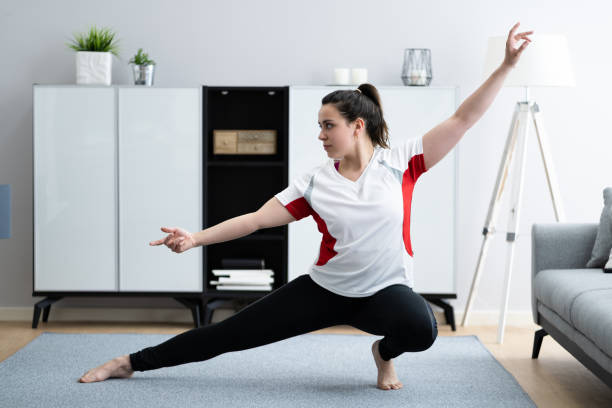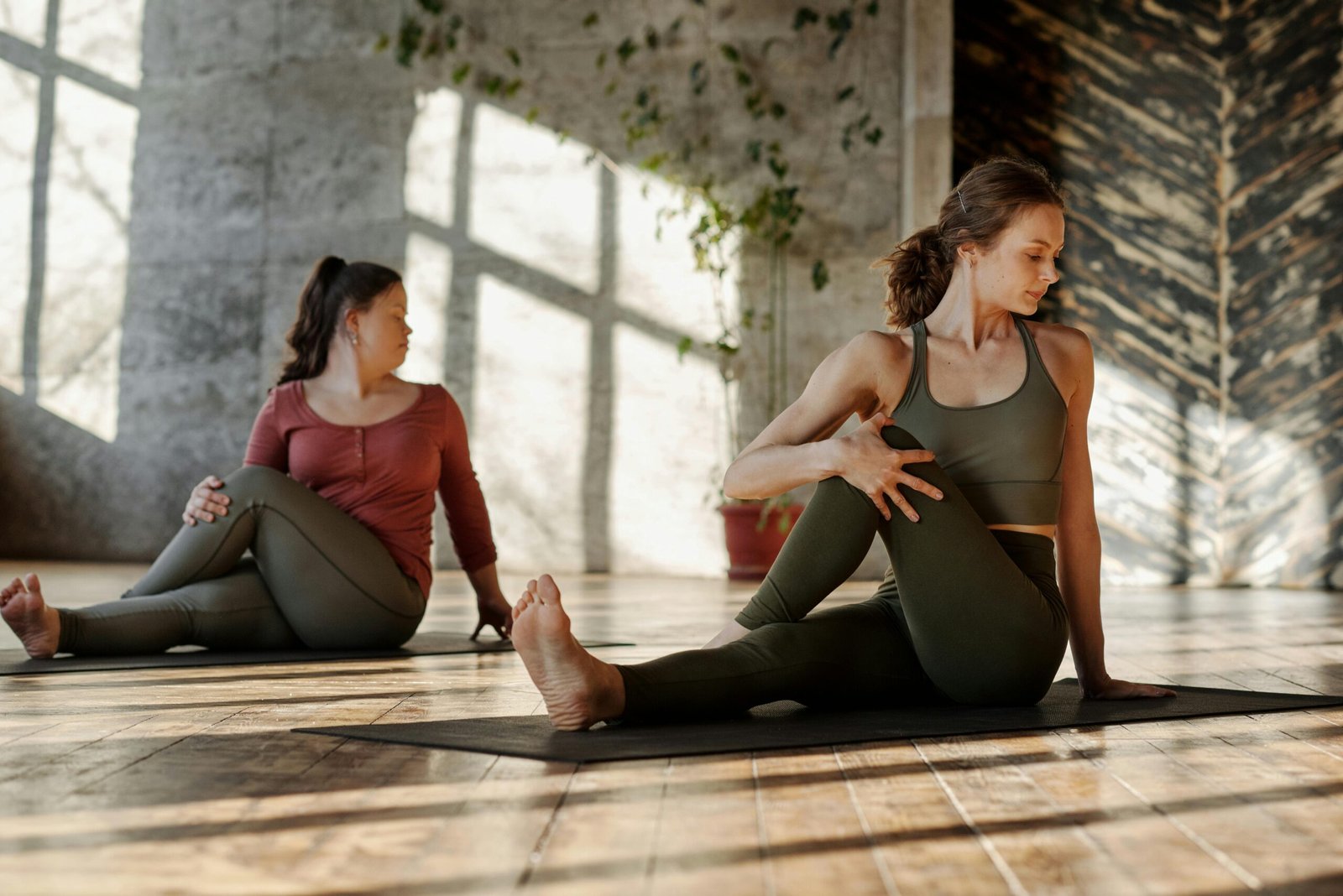Introduction
Stretching is one of those things we all know we should do but often overlook. Whether you’re an athlete, a fitness enthusiast, or just someone looking to improve flexibility, stretching should be a non-negotiable part of your routine. One of the simplest yet most effective stretches is the “Arm Across the Chest” stretch. In this article, we’ll dive into everything you need to know about this stretch—why it’s important, how to do it correctly, and the benefits you can expect.
Understanding the Arm Across the Chest Stretch
So, what exactly is the “Arm Across the Chest” stretch? This stretch involves bringing one arm across your body and using the opposite hand to gently pull it towards your chest. It’s a great way to target the shoulder and upper back muscles, helping to improve flexibility and reduce tension.
Muscles Targeted: The primary muscles engaged in this stretch are the deltoids, which are the muscles around your shoulder, and the trapezius, the muscles that extend down your back. It also subtly engages the triceps and upper back muscles.
Common Uses: This stretch is popular among athletes, particularly those in sports like tennis, swimming, and baseball, where the shoulders and arms are in constant motion. It’s also useful for anyone who spends long hours at a desk, as it helps relieve the tension that builds up from sitting in the same position for extended periods.
Benefits of the Arm Across the Chest Stretch
The benefits of this stretch go beyond just feeling good. Here are a few reasons why you should incorporate it into your routine:
Improved Flexibility and Range of Motion: Regularly performing this stretch helps increase the flexibility of your shoulder joints and muscles, which can lead to a greater range of motion. This is crucial for preventing injuries, especially in sports and daily activities.
Enhanced Muscle Recovery and Injury Prevention: Stretching after a workout helps in muscle recovery by reducing the stiffness that often follows exercise. By incorporating this stretch, you’re less likely to experience strains or injuries, particularly in the shoulder area.
Reduction of Muscle Tension and Stress: The “Arm Across the Chest” stretch is also great for reducing muscle tension, which often builds up in the shoulders. This can be particularly beneficial for stress relief, as tension in the shoulders is commonly linked to stress and anxiety.
Importance in Sports and Physical Activities: Athletes often use this stretch as part of their warm-up or cool-down routines to prepare their muscles for the demands of their sport or to aid in recovery after a strenuous activity.
Step-by-Step Guide to Performing the Arm Across the Chest Stretch
Performing this stretch correctly is key to reaping its full benefits. Here’s how you can do it:
- Preparing for the Stretch: Start by standing up straight with your feet shoulder-width apart. Relax your shoulders and take a deep breath.
- Proper Posture and Positioning: Bring your right arm across your chest. With your left hand, hold your right upper arm or elbow, pulling it gently towards your chest. Keep your shoulders relaxed and avoid hunching them.
- Detailed Instructions: Hold this position for about 20–30 seconds, breathing deeply throughout. You should feel a gentle stretch along the back of your shoulder and upper back. Repeat the stretch with the opposite arm.
- Common Mistakes to Avoid: Ensure you don’t pull your arm too hard, which can strain your shoulder muscles. Keep your body straight and avoid twisting your torso to enhance the stretch.
Variations of the Arm Across the Chest Stretch
There are several variations of this stretch that you can try to target different muscles or to suit your comfort level:
- Seated Version: Sit on the edge of a chair or bench with your back straight. Perform the stretch in the same way as described above, keeping your lower body stable.
- Standing Version: This is the most common version and is performed as described in the step-by-step guide.
- Using a Wall or Resistance Band: To deepen the stretch, you can press your arm against a wall or use a resistance band for added tension.
Incorporating the Arm Across the Chest Stretch into Your Routine
For optimal results, it’s important to integrate this stretch into your regular routine.
Best Times to Stretch: The ideal time to perform this stretch is after a workout when your muscles are warm and more pliable. It’s also beneficial to stretch after long periods of sitting or working at a desk.
Frequency: To maintain flexibility and reduce tension, aim to do this stretch at least 3–4 times a week. For athletes, it can be beneficial to include it in both your warm-up and cool-down routines.
Combining with Other Stretches: Pair this stretch with others that target different areas of the body for a balanced stretching routine. For example, follow it up with a triceps stretch or a chest opener.
Precautions and Considerations
While the “Arm Across the Chest” stretch is generally safe, there are a few things to keep in mind:
Who Should Avoid This Stretch? If you have a shoulder injury or severe pain, it’s best to avoid this stretch until you consult a healthcare professional.
Understanding Your Limits: Listen to your body and don’t push yourself too hard. The stretch should feel comfortable, not painful.
Seeking Professional Guidance: If you’re unsure about your form or experience discomfort, consider consulting a physiotherapist or fitness trainer for guidance.
Common Misconceptions About the Arm Across the Chest Stretch
There are a few myths floating around about this stretch that need to be addressed:
Myth: “It’s only for athletes.”
Reality: This stretch is beneficial for everyone, whether you’re an athlete, a desk worker, or someone simply looking to improve their mobility.
Myth: “It’s okay to stretch cold muscles.”
Reality: Stretching cold muscles can lead to injury. It’s best to warm up first or incorporate this stretch at the end of your workout when your muscles are warm.
Testimonials and Personal Experiences
Many people have found relief and improved flexibility through regular practice of the “Arm Across the Chest” stretch. For instance, Sarah, a professional swimmer, mentions how it helps her maintain shoulder flexibility and reduce post-swim stiffness. Meanwhile, John, an office worker, finds that it eases the tension in his shoulders after long hours at the computer.
How the Arm Across the Chest Stretch Helps with Specific Sports
This stretch is particularly beneficial for athletes engaged in sports that heavily involve the shoulders and arms.
- Tennis Players: The stretch helps maintain shoulder flexibility, crucial for powerful serves and volleys.
- Swimmers: It aids in maintaining the shoulder’s range of motion, which is essential for various strokes.
- Yoga and Pilates: This stretch complements the shoulder openings often practiced in these disciplines, enhancing overall flexibility and alignment.
The Science Behind the Arm Across the Chest Stretch
Understanding the science behind this stretch can help you appreciate its importance.
Physiological Effects: When you stretch the muscles in your shoulder, you’re lengthening the muscle fibers, which increases flexibility and range of motion.
Muscle Recovery: Stretching post-exercise helps to prevent the muscles from becoming stiff and sore, which aids in quicker recovery.
Overall Physical Health: Regular stretching improves circulation, reduces stress, and enhances overall physical well-being.
Tips for Enhancing Your Stretching Routine

To get the most out of your stretching routine, consider these tips:
- Warm-Up Exercises: Before you stretch, do some light cardio or dynamic movements to warm up your muscles.
- Cool-Down Techniques: After stretching, cool down with some deep breathing or a relaxation exercise to help your body transition back to a resting state.
- Mindfulness and Breathing: Incorporating deep breathing while stretching can help deepen the stretch and enhance relaxation.
FAQs About the Arm Across the Chest Stretch
Can this stretch help with shoulder pain?
Yes, if done correctly and regularly, this stretch can help reduce shoulder pain by improving flexibility and reducing muscle tension.
How long should I hold the stretch?
Aim to hold the stretch for about 20–30 seconds, repeating 2-3 times on each arm.
Is it normal to feel discomfort during the stretch?
You should feel a gentle pull, but not pain. If you feel pain, ease off the stretch and ensure you’re not overextending.
Conclusion
Incorporating the “Arm Across the Chest” stretch into your routine is a simple yet powerful way to improve your shoulder flexibility, reduce muscle tension, and prevent injuries. Whether you’re an athlete or just someone looking to improve your overall well-being, this stretch offers benefits that are hard to ignore. So next time you’re stretching, take a moment to cross your arm over your chest and give your shoulders the care they deserve.
Additional Resources and Recommendations
For those looking to dive deeper into stretching routines, check out online video tutorials or consider reading books focused on flexibility and injury prevention. Incorporating a variety of stretches will ensure a balanced and comprehensive approach to maintaining your body’s health.



